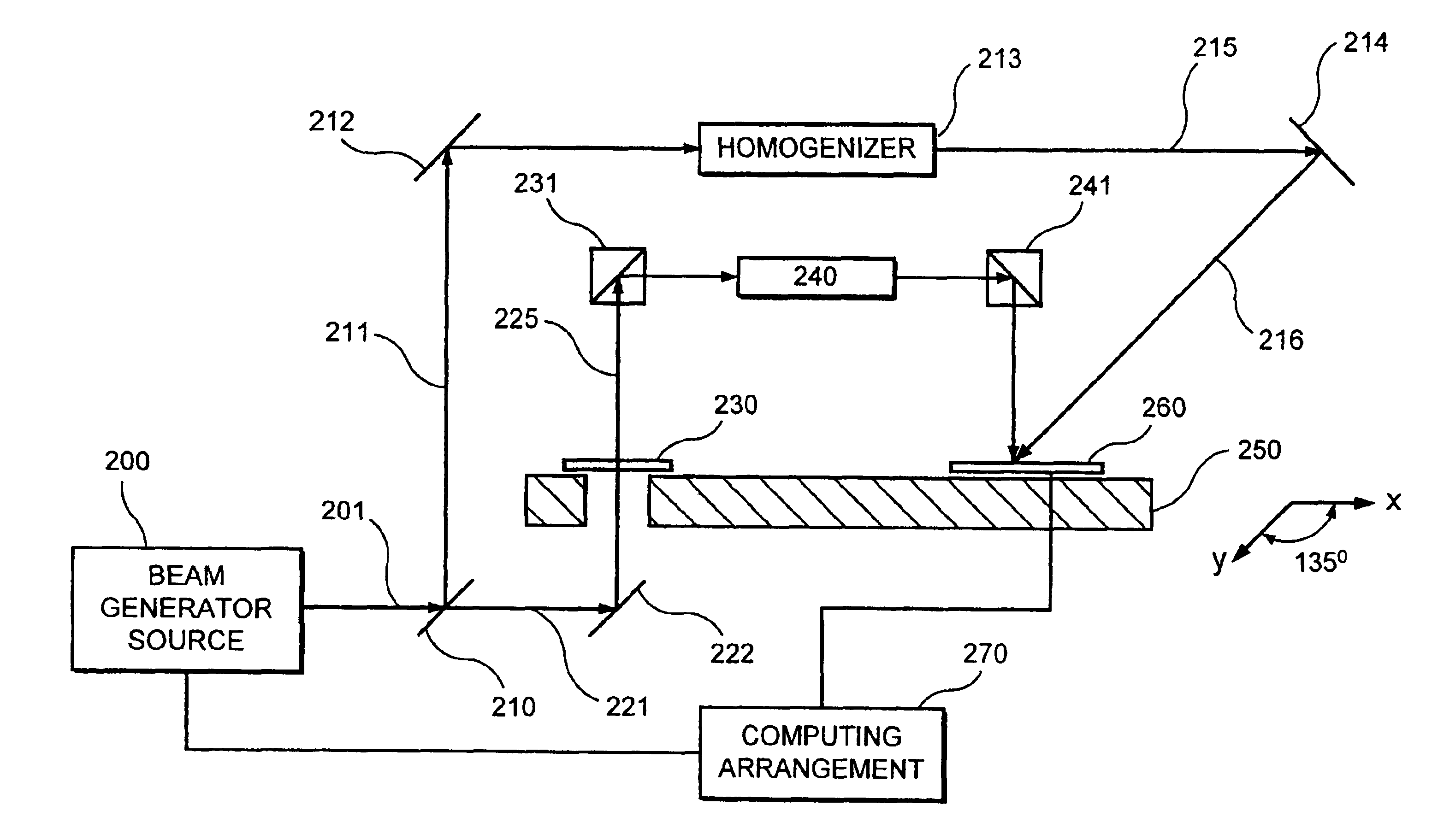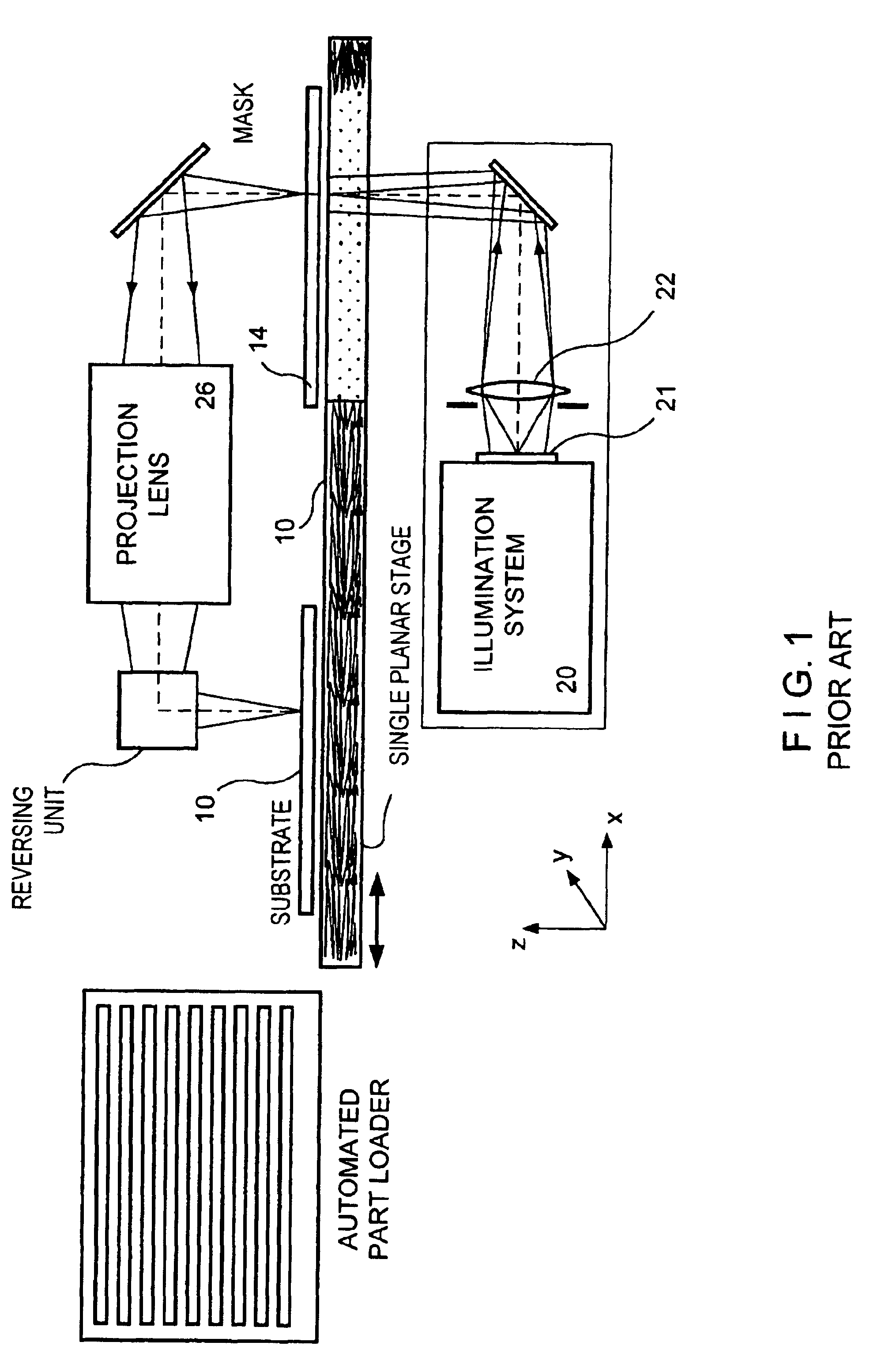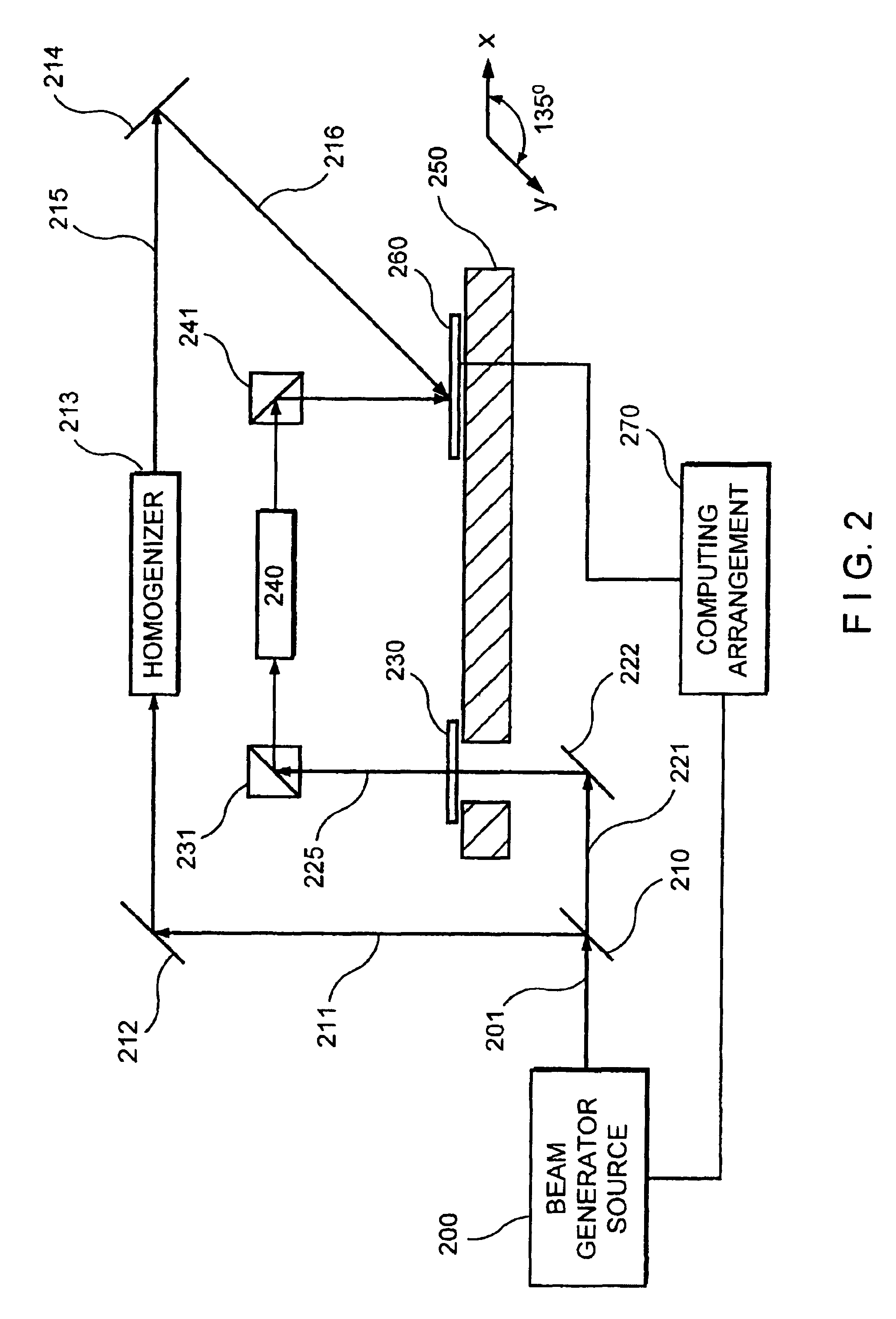Process and mask projection system for laser crystallization processing of semiconductor film regions on a substrate
a projection system and laser crystallization technology, applied in the field of semiconductor film processing techniques, can solve problems such as damage to and achieve the effect of increasing the lifetime of the optics of the system and reducing energy
- Summary
- Abstract
- Description
- Claims
- Application Information
AI Technical Summary
Benefits of technology
Problems solved by technology
Method used
Image
Examples
Embodiment Construction
[0025]An exemplary embodiment of a projection irradiation system according to the present invention is shown as a schematic block diagram in FIG. 2. In particular, a beam source 200 (e.g., a pulsed excimer laser) generates an excimer laser beam 201 (composed of beam pulses) which passes through a beam splitter 210 to become two beams 211, 221. In one exemplary implementation of the present invention, these two split beams 211, 221 may each have 50% of the energy that of the original beam 201. It is within the scope of the present invention to possibly utilize other energy combinations with the exemplary system of the present invention illustrated in FIG. 2. Each of the beams 211, 221 is composed of a set of beam pulses.
[0026]The first split beam 211 can be redirected by a mirror 212 toward a homogenizer 213, which then outputs a homogenized beam 215. Thereafter, the homogenized beam 215 (and its respective beam pulses) can be redirected by a second mirror 214 so as to be incident on...
PUM
| Property | Measurement | Unit |
|---|---|---|
| Time | aaaaa | aaaaa |
| Thickness | aaaaa | aaaaa |
| Transparency | aaaaa | aaaaa |
Abstract
Description
Claims
Application Information
 Login to View More
Login to View More - R&D
- Intellectual Property
- Life Sciences
- Materials
- Tech Scout
- Unparalleled Data Quality
- Higher Quality Content
- 60% Fewer Hallucinations
Browse by: Latest US Patents, China's latest patents, Technical Efficacy Thesaurus, Application Domain, Technology Topic, Popular Technical Reports.
© 2025 PatSnap. All rights reserved.Legal|Privacy policy|Modern Slavery Act Transparency Statement|Sitemap|About US| Contact US: help@patsnap.com



